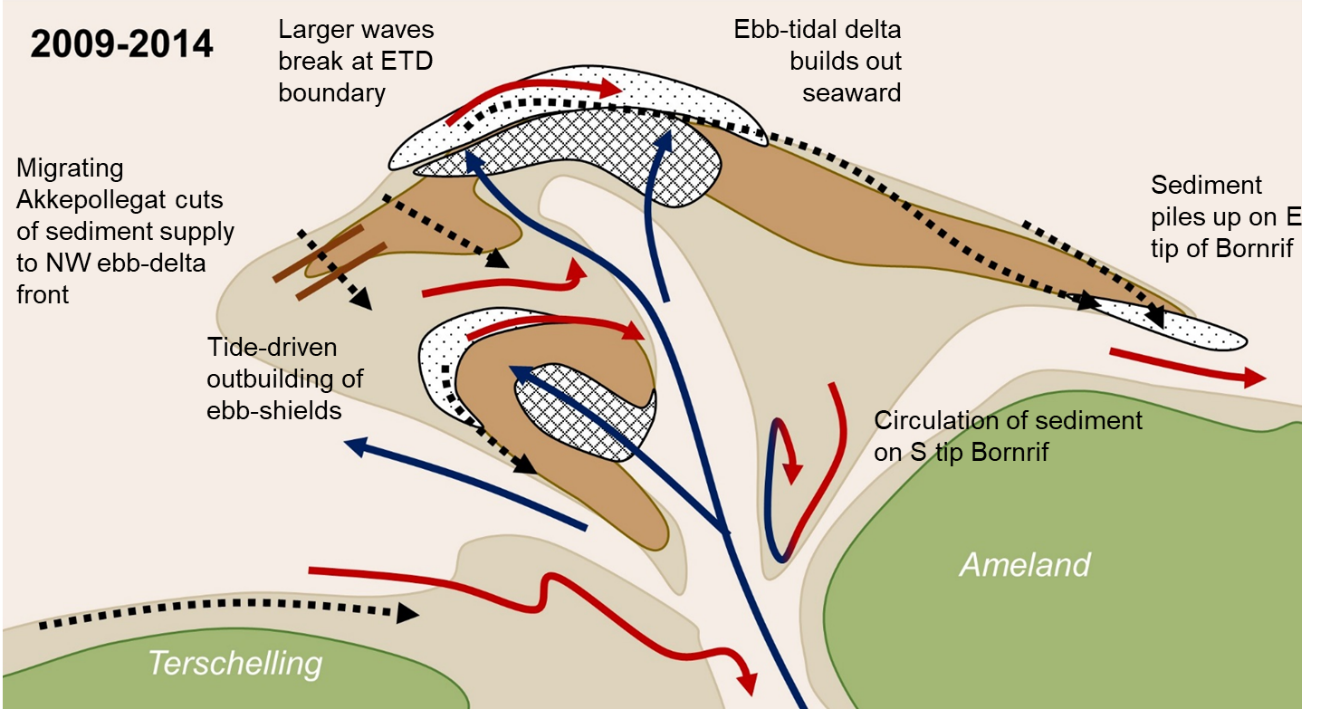P.M. Lambregts1*, S.G. Pearson1,2, E.P.L. Elias2, B.C. van Prooijen1, Z.B. Wang1,2, S. Pluis3, J.E.A. Storms1
1 TU Delft
2 Deltares
3 Rijkswaterstaat
*corresponding author:
Introduction
A large part of the Dutch coast, the barrier islands in the Wadden Sea included, would be eroding if the deficit in the total sediment budget was not compensated for through nourishments. Ebb-tidal deltas have an important function within the coastal system that make them of interest for coastal defence as a source and transport path for sand to the back-barrier basins and the island coastlines. As part of the Kustgenese 2.0 project, a pilot nourishment of 5.5 million m3 has been placed on the Ameland ebb-tidal delta. Improved understanding of sediment bypassing processes and the interaction with a nourishment is needed for strategic placement of nourishments in the future.
Methods
The high-frequency bathymetric dataset available at Ameland inlet between 2005 and 2020 is analysed and used to model the tide- and wave-driven transport pathways with to SedTRAILS to determine how sediment bypassing works under natural circumstances and under the influence of a nourishment. Insights are combined in a series of conceptual models which illustrate sediment bypassing behaviour.
Results
The conceptual models (example in Figure 1) show that the formation and growth of a series of ebb-shields on the western side of the ebb-tidal delta plays an important role in sediment bypassing. Their development gradually results in transport pathways connecting the western side of the ebb-tidal delta to the major transport pathway along the ebb-delta front, which forms a direct connection to the Ameland coast in 2017. The influence of the pilot nourishment on sediment bypassing processes is limited, adding volume to the system but not altering the existing transport pathways. Transport pathways show that sediment from the nourishment eventually reaches the Ameland coast and is unlikely to feed the Terschelling coast or the tidal basin. This is valuable knowledge for the future sustainable coastal management of Ameland inlet, which can also be extended to other inlets.


Figure 1: Conceptual model illustrating sediment bypassing behaviour during ebb-shield growth from 2009 to 2014, including residual transports (arrows) and areas of sedimentation and erosion (shaded).
I. Surname1*, F.N. Another-Surname2 , Y. Next-Surname2
1 University Name, Country; 2 Organization Name, Country
* Corresponding author: mail.name@organization.org


